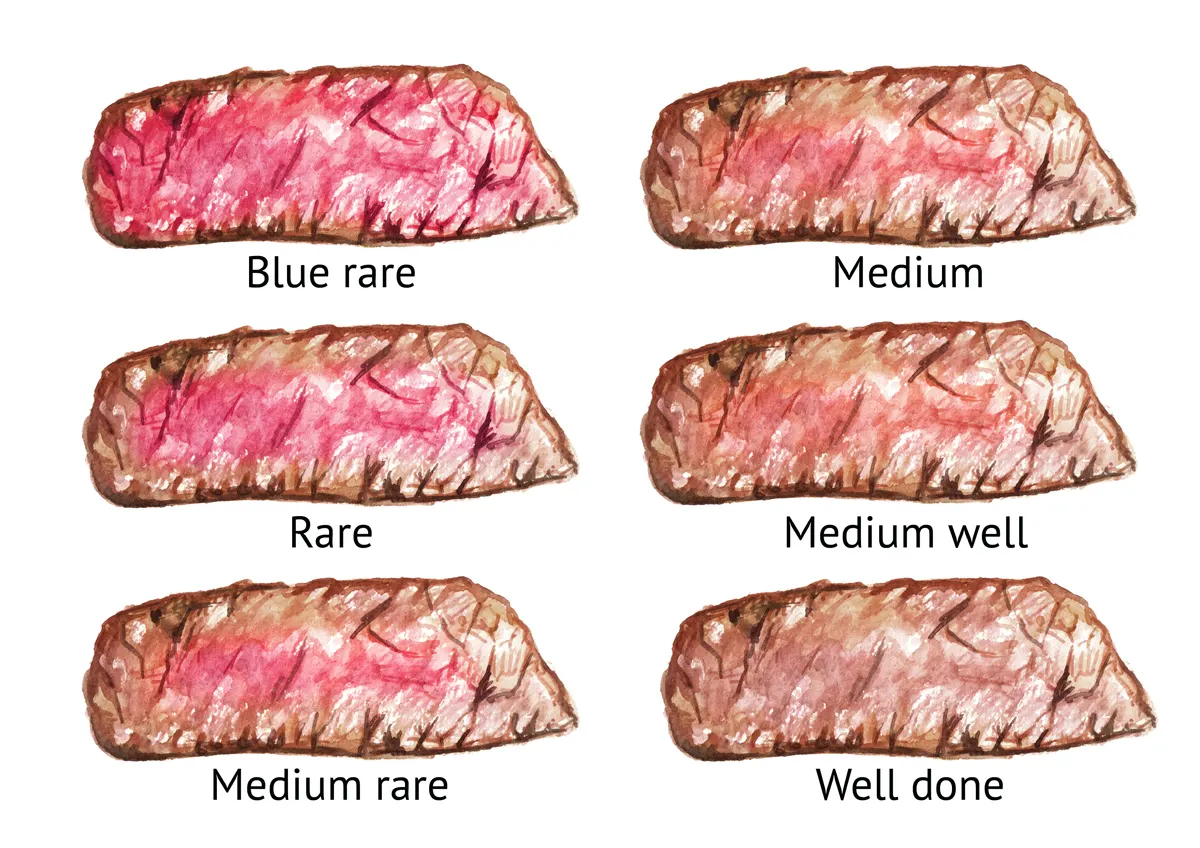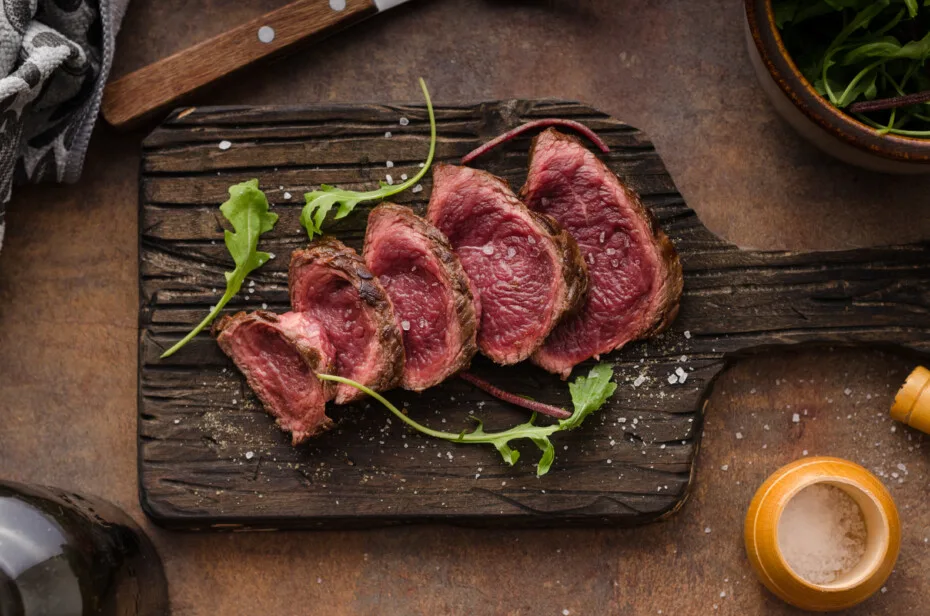If you thought a rare steak was undercooked, you haven’t met the blue steak yet. Blue steak receives a quick kiss from the grill and is served up extra rare.
It is one step away from being raw, but most people usually see it as raw beef.
Blue steak is called blue because it has a blueish purple color. However, when exposed to oxygen, the blue color dissipates and changes to red color.
The process of the myoglobin being exposed to air from when it is fabricated to when it is purchased from the butcher is responsible for this.
Because rare blue steak’s cooking time elapses so quickly, it is only natural to wonder if this steak is safe to consume and what its flavor profile tastes like.
Contents
What Is Blue Rare Steak?
Essentially a blue rare steak is a steak that is cooked to 115°F. The exterior of the steak is seared to brown the mean.
However, the meat’s interior remains almost the same as when it is raw.
Therefore, the meat’s interior does not undergo drastic cooking changes.
The cooking process for blue steak happens so quickly that the intramuscular fat does not have time to render in the meat; hence the steak being referred to as raw.
What’s the Difference Between a Blue and Rare Steak?
Although blue steak is referred to as blue rare, there are a few significant differences between blue and rare steaks.
However, the primary difference between the two steaks is that a rare steak is seared and the outside and is approximately 75% red in the center.
In contrast, blue rare steak is seared on the exterior and completely red in the center.

What Does Blue Steak Taste Like?
Blue steak is super raw. Since it is seared so quickly, the interior of the steak is cool with a red center.
Honestly, unless you are a blue steak enthusiast, it’s flavor profile is not attractive.
Blue steak has a sponge-like texture. In addition to this, it is difficult to chew and lacks tenderness and moisture since the heat is unable to cook the steak completely.
Is Blue Steak Safe To Eat?
In total blue steak is cooked for approximately one minute. The biggest myth about blue rare steak is that it’s raw, which means it is not safe for consumption. However, blue steak is safe for consumption.
Cooking the steak for a minute seals the entire exterior of the steak, including all edges, makes the steak safe to eat.
This also destroys the presents of any foodborne illness, causing germs.
Scientists evaluated procedures used to cook raw meats such as blue steaks and discovered that E. coli, a microbe responsible for causing food poisoning found on the steak, was not a direct result of cooking to a rare temperature.
Furthermore, after sterilizing the tongs and flipping the blue steak, there was no E.coli detected.
Essentially this study uncovered E. coli is present on the exterior of the meat, not the interior of the meat.
Always be sure to sterilize yours after you have placed the steak in the pan, after flipping it and serving it. Sterilizing the tongs will reduce your chances of being exposed to foodborne illness.
How To Cook Blue Rare Steak?
To cook blue rare steak, you need a steak that is a minimum of an inch in thickness.
You will also need olive oil seasonings of your choice, a large frying pan, tongs, and disinfecting wipes to cook a blue rare steak.
As with any steak, you must make sure your steak is at room temperature to ensure it cooks evenly and the interior warms up.
Dry your steak with paper towels before seasoning it. Making your skillet is extremely hot is an important step in this process.
Cooking a blue steak is fruitless if the temperature is not high enough as the steak is cooked for such a time.
Make sure your skillet is hot, then add the steal to the pan. Though it is your instinct to want to move the steak, do not move the steak.
You can gently press it but allow the steak to sear for one minute before flipping it.
Sterilize your utensils while you are waiting for the steak to sear.
After a minute has passed, turn the steak over, cook it for one more minute, and sterilize your utensils again.
Even though the steak is seared on both sides, the work does not stop there.
All sides of a blue steak must be seared to neutralize bacteria to prevent foodborne illness from occurring.
That being said, if the steak’s edges are still raw, roll it on its sides until they are seared.
Check the blue rare steak’s temperature if the temperature is in the range of 115℉-120℉. Allow the blue steak to rest for 10-15 minutes.
Though allowing it to rest removes the warmth from the steak, it is necessary to allow it to rest.
However, to avoid eating a cold steak, you can also reheat the same pan you cooked it in and flash it for a few seconds on both sides until it is warm.
Ultimately the test of perfection is the steak’s level of sponginess. It should not have any resistance.
Some describe a perfectly cooked blue rare steak as one that feels like space between the thumb and forefinger when it is relaxed.
Final Thoughts
All steaks enthusiasts have a preference when it comes to the perfect steak.
Some prefer a well-done steak, while others think it is the highest steak crime that can be committed because it robs the steak of its precious juices.
The other extreme of this equation is the rare blue steak. Also called a steak shy of being raw is kissed by the grill for 2 minutes until it is seared on all sides.
While this steak is certainly not for everyone, there is absolutely nothing wrong with that if you prefer it.
Steaks are a matter of preference. Now that you know everything about blue steaks, you can safely prepare and enjoy them!
You might also be interested in the following:

I have been smoking and grilling meat from an early age and enjoy sharing my knowledge and expertise through the hundreds of articles I have written about BBQ. I hope to make everyone’s BBQ journey that little bit easier.

